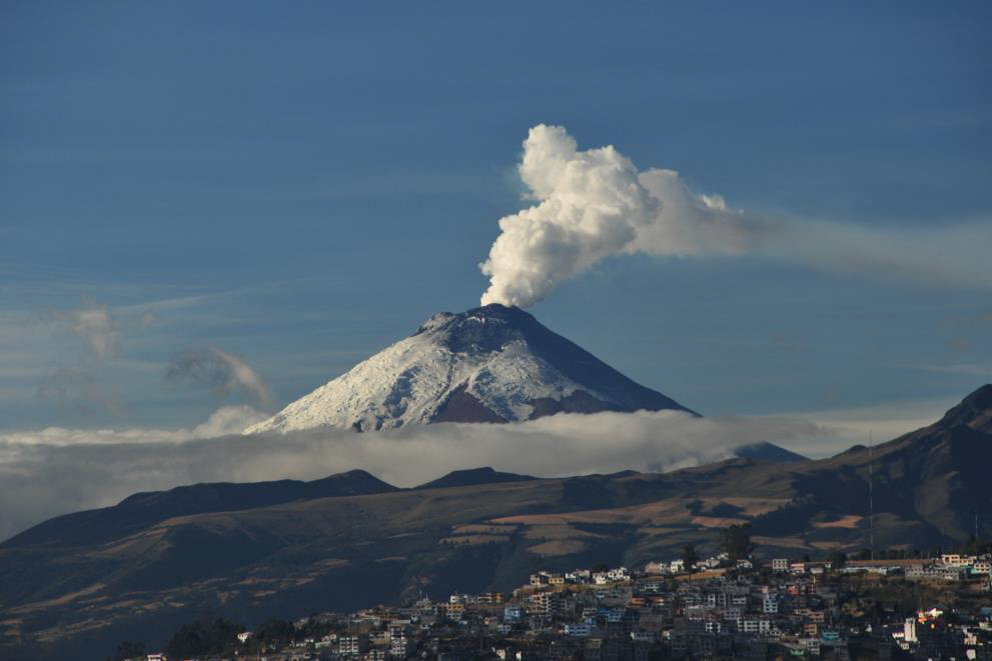Cotopaxi volcano is located about 60 kilometers southeast of Quito. After showing signs of resuming its activity, it is being monitored.
On Sunday, October 23, the Geophysical Institute of the National Polytechnic School, which monitors Cotopaxi, stated that lahars, streams of water and debris falling from one of the volcano’s flanks, have been registered as a result of the thawing of the volcano’s snow layer.
Since last Friday, the volcano has been showing signs of activity again, with records of a slight tremor due to the emission of gases, water vapor, and little ash, which recalled its reactivation in 2015.

At that time, the volcano emitted large amounts of gases, water vapor, and ash for several weeks but then decreased its activity.
Since its reactivation in 2015, Cotopaxi has been one of the most observed volcanoes in Ecuador.
This volcano is considered one of the 15 most dangerous volcanoes in the world.
The threat lies in the extensive glacier that covers the volcano, which could melt, affecting the population living near the volcano.
According to the Geophysical Institute, the impact on the Ecuadorian highlands and coast would be significant if it were to erupt, given the volcano’s historical eruption frequency, eruption style, relief, and glacier cover.
According to the Geophysical Institute of the National Polytechnic School, the lahars were “not co-eruptive” but the result of the thawing of a glacial layer:
“This layer of ash facilitates the thawing of a superficial part of the ice and generates water that mixes with the debris in its path, creating small lahars.
“These flows were short-lived and did not reach the surrounding rivers, such as the Cutuchi and the Pita,” the organization reported.
At the moment, technicians assured that these minor episodes do not contain enough elements to cause an alarm.
In addition to the lahars, gas and steam emissions from the volcano were measured Sunday afternoon, reaching 500 meters above the summit.
With information from Latina Press

